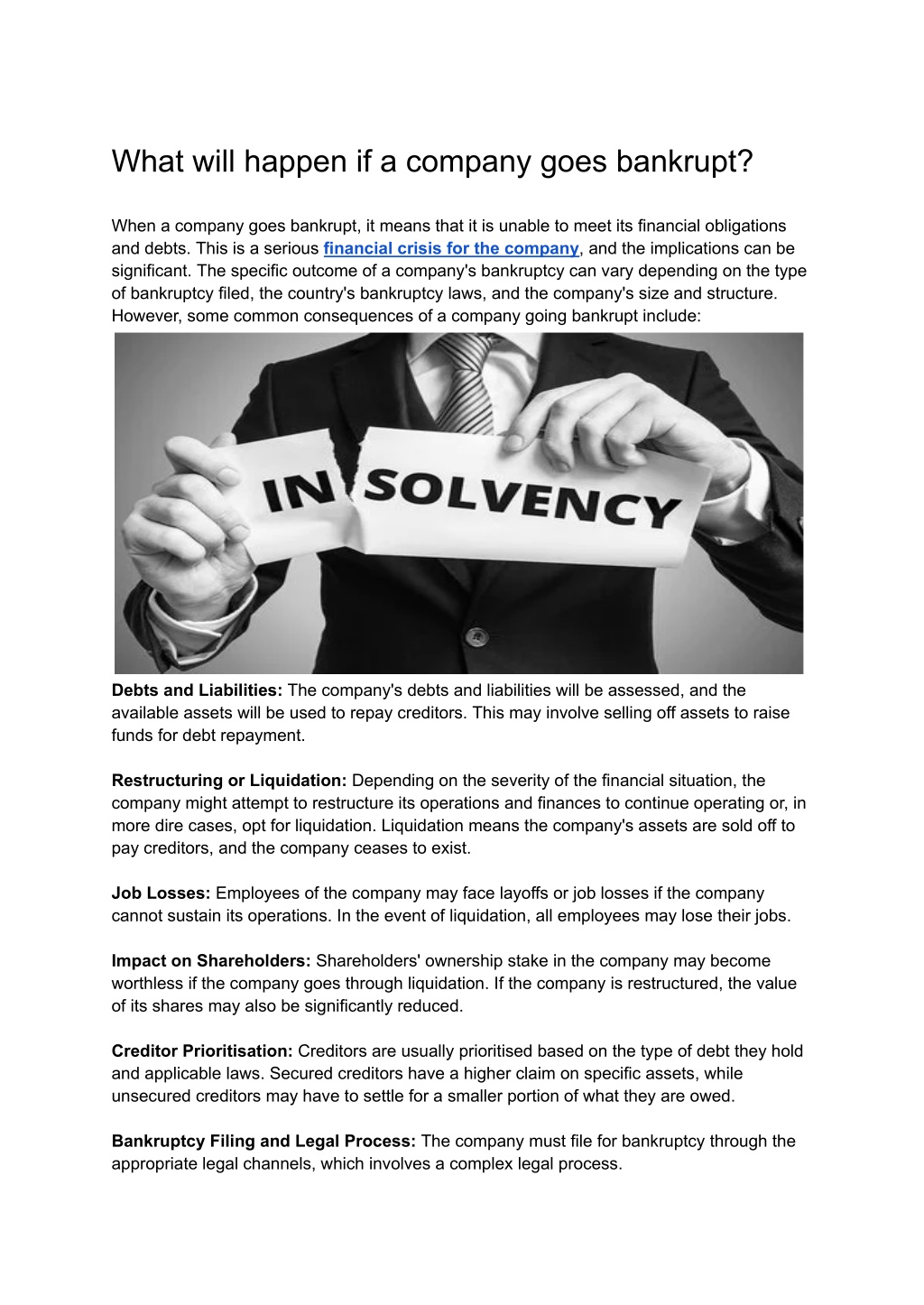Understanding the Effects of Firm Liquidation on Staff Member Retention and Perks

Influence on Task Safety
In the event of business liquidation, the effect on task safety and security can be significant for staff members as uncertainty concerning future work develops. When a firm enters into liquidation, employees face the complicated prospect of possible task loss. This uncertainty can result in heightened anxiety and anxiousness amongst the workforce, influencing their spirits and efficiency.
During the liquidation procedure, employees might experience a series of emotions, consisting of anxiety, aggravation, and rage, as they come to grips with the possibility of joblessness. The absence of quality surrounding the timeline of the liquidation and the fate of their placements can create a feeling of instability within the workforce.
Additionally, employees may also be concerned concerning the status of their benefits, such as healthcare protection, retirement plans, and paid pause, throughout and after the liquidation procedure. The prospective loss of these advantages adds an additional layer of complexity to an already tough situation for workers.
Modifications in Employee Perks

One typical modification is the decrease or removal of certain benefits to cut expenses and settle outstanding debts. As an example, employer payments to retirement might discontinue, leaving employees to take on the full responsibility of conserving for their future. Moreover, medical care advantages may be downsized, leading to greater out-of-pocket expenses for clinical services.
Interaction becomes paramount throughout this period of shift. Employers must be clear regarding the changes, giving clear explanations and support to assist workers browse with the modifications. Open up discussion and support can aid minimize anxiousness and unpredictability amongst the labor force, cultivating a much more positive transition experience regardless of the tough circumstances.
Retention Strategies Post-Liquidation
Following the company liquidation, executing efficient retention methods is vital to safeguarding organizational skill and preserving security within the workforce. In times of uncertainty, staff members might feel anxious here are the findings regarding their future task protection and be more likely to look for different job opportunity. To reduce this danger, firms must concentrate on open communication, offering openness relating to the company's scenario, and providing support to workers throughout the change period.
One key retention strategy post-liquidation is to focus on employee well-being and morale. This can be achieved through regular check-ins, counseling services, and producing a positive workplace. Additionally, offering occupation advancement possibilities and upskilling programs can improve employee motivation and interaction throughout difficult times. Recognizing and compensating employees for their commitment and dedication can also promote a sense of loyalty and dedication to the company.
In addition, developing a clear job progression course and setting sensible goals can give workers a feeling of instructions and objective within the business (do employees get paid when company goes into liquidation). By purchasing worker advancement and actively including them in decision-making procedures, companies can enhance worker retention prices and construct a resilient workforce post-liquidation
Legal Rights and Defenses
During the after-effects of firm liquidation, check it out it is vital to attend to the legal rights and securities offered to employees to ensure a fair and compliant process. It is important for staff members to comprehend these legal rights and seek lawful guidance if required to navigate the intricacies of the liquidation process.
Additionally, in cases where a firm enters into liquidation, employees are typically thought about preferential financial institutions, providing them greater concern in receiving superior settlements over other creditors. This protection assists focus on clearing up employee cases before various other economic responsibilities are met. Lawful safeguards exist to stop unfair terminations throughout liquidation, guaranteeing that discontinuations are carried out according to established labor regulations. Comprehending these lawful civil liberties and securities is fundamental for workers to protect their interests and look for ideal recourse in the event of business liquidation.
Handling Financial Unpredictability
Navigating monetary unpredictability can be an overwhelming challenge for workers influenced by firm liquidation. The sudden loss of revenue, benefits, and work safety and security can considerably disrupt people' monetary stability. During such times, it is crucial for workers to examine their present financial situation genuinely. Developing a thorough spending plan that prioritizes essential expenses can aid in taking care of instant monetary requirements. Furthermore, discovering readily available federal government support programs, such as welfare or retraining possibilities, can give some alleviation.
Looking for financial therapy or advice from professionals can offer beneficial understandings right into handling debts, reorganizing financial responsibilities, and intending for the future. It is important for employees to stay informed concerning their entitlements, such as severance bundles or exceptional payments, to guarantee they get what they are owed. Thinking about alternate work choices or job opportunities can aid bridge economic gaps throughout this transitional period. By proactively addressing monetary difficulties, staff members can browse with the unpredictability brought on by business liquidation with greater resilience and readiness.
Verdict
In conclusion, company liquidation can have substantial ramifications on employee job security, advantages, and general wellness. Comprehending lawful rights and securities can aid minimize the influence of liquidation on workers.
When a business faces liquidation, the destiny of its staff members hangs in the balance, raising crucial inquiries about job safety, benefits, and lasting stability. The effect of business liquidation on see this employee retention and advantages is a complex issue that requires a closer evaluation to comprehend the full extent of its repercussions.
Browsing monetary uncertainty can be a challenging obstacle for employees influenced by business liquidation. By proactively addressing monetary challenges, workers can browse with the unpredictability caused by business liquidation with higher resilience and readiness.
